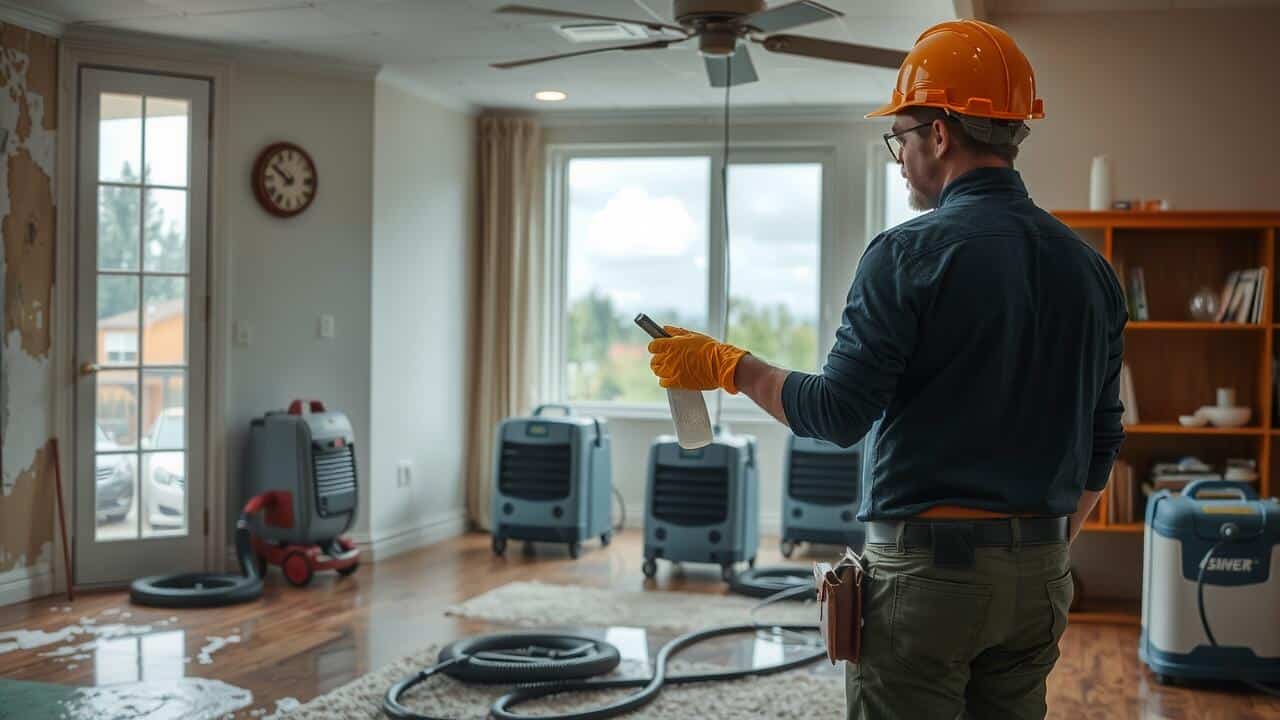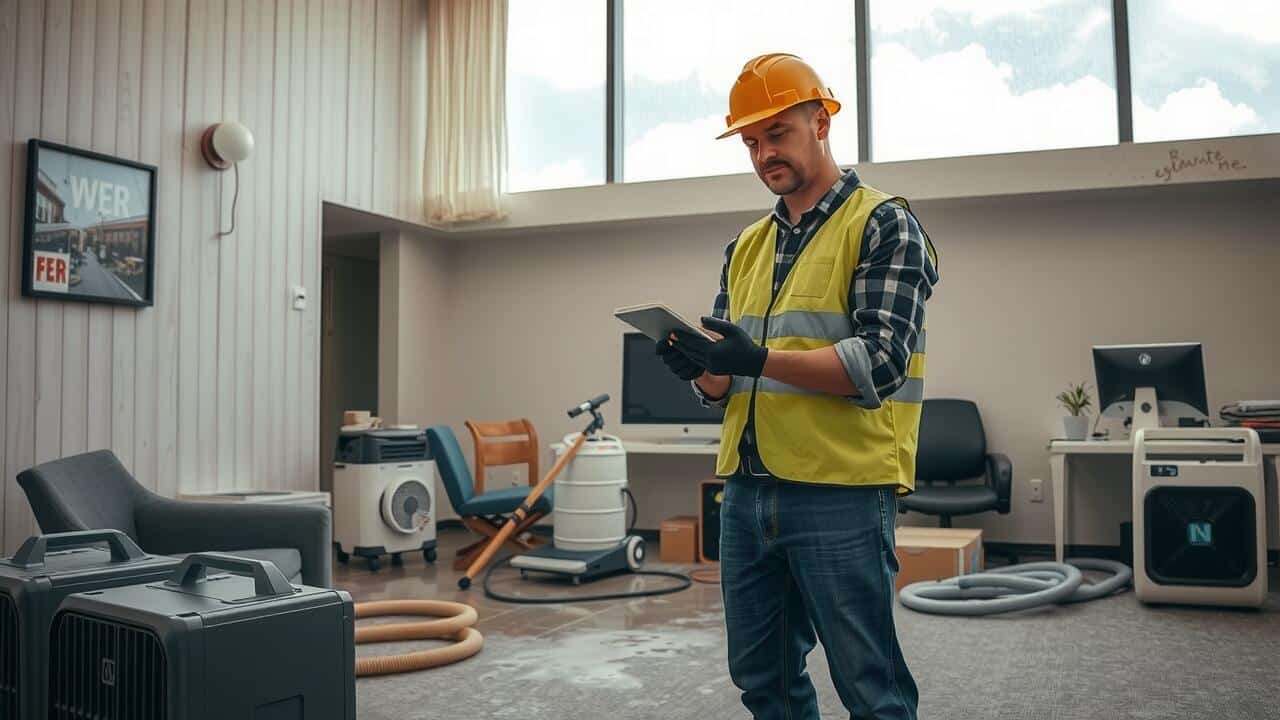
Table Of Contents
Signs You Need Water Damage Restoration
Water damage can manifest in various forms, making it crucial to recognize early signs. Stains on walls or ceilings often indicate water infiltration, while a musty odor may suggest mold growth. Buckling floors or peeling paint are additional clues that water may have compromised your property’s integrity. When these signs are evident, it’s essential to act swiftly to protect your investment and prevent further deterioration.
Rainwater damage restoration in your home or commercial property requires immediate attention when these symptoms arise. Ignoring the issue can lead to structural damage, health risks from mold exposure, and costly repairs down the line. Proactive measures, including regular inspections and proper maintenance, can help mitigate potential damage. Homeowners must remain vigilant and responsive to any indication of water intrusion.
Identifying the Early Warning Signs
Water damage can often go unnoticed until it becomes a significant issue. Homeowners should be vigilant for early warning signs such as damp spots on walls or ceilings. A musty odor within the home can indicate the presence of mold, which is often a result of prolonged moisture. Additionally, signs like peeling paint or warped flooring may suggest water infiltration, making it crucial to address these problems promptly.
Identifying the source of moisture is essential for effective restoration. Common sources include leaky roofs, broken pipes, and insufficient drainage systems. Homeowners in need of assistance with these issues may consider services like Rainwater Damage Restoration in their area, which specialize in pinpointing sources and providing necessary repairs. Timely intervention can prevent further damage and potential health risks associated with prolonged exposure to water.
Do-It-Yourself vs. Professional Services
Homeowners often consider a do-it-yourself approach for water damage restoration due to its perceived cost savings. With access to online tutorials and rental equipment, tackling minor issues like leaks or small spills can seem manageable. However, DIY efforts may not account for hidden damage or mold growth, which can lead to more significant problems if not addressed properly. Proper equipment and knowledge are essential for effective water extraction and drying processes, making it crucial to assess one’s capabilities before proceeding independently.
In contrast, professional services provide expertise and experience that can be invaluable in water damage scenarios. Trained technicians can quickly identify the extent of the damage and utilize advanced equipment for thorough remediation. For severe cases, such as those caused by storm flooding or extensive leaks, opting for professionals may result in a more efficient restoration process. Rainwater Damage Restoration in these instances is often best handled by specialists who can ensure safety and compliance with local regulations, offering peace of mind to property owners.
Pros and Cons of Each Approach
When considering water damage restoration, homeowners often weigh the pros and cons of do-it-yourself (DIY) methods versus hiring professionals. DIY approaches can save money and offer a sense of accomplishment. Simple tasks, such as drying out small areas or using fans to circulate air, might be manageable for some. However, improper handling can lead to inadequate solutions and further issues like mold growth. Specialized tools and techniques are often needed to tackle deeper problems, which may not be accessible to the average homeowner.
On the other hand, professional water damage restoration services come with their own set of advantages and disadvantages. Experts have the training and equipment to identify and resolve issues effectively, especially in cases of severe damage caused by flooding or leaks. These services can also provide a warranty for their work, ensuring that problems are addressed adequately. Yet, the cost can be a drawback, particularly for those on tight budgets. For those in need of comprehensive solutions, Rainwater Damage Restoration in such situations can mitigate future risks and restore properties efficiently.
Preventive Measures for Water Damage
Taking preventive measures against water damage is essential for protecting your home. Regularly inspecting your roof, gutters, and downspouts can help identify any potential leaks or blockages. Keeping gutters free from debris allows rainwater to drain properly, reducing the risk of overflow. Checking for cracks in your foundation should also be part of routine maintenance. Small issues can escalate, leading to significant problems such as water intrusion and mold growth.
Incorporating water-resistant materials in vulnerable areas can provide additional protection. Consider using waterproof paint in basements or bathrooms where moisture levels are higher. Installing sump pumps can manage excess water during heavy rainfall. If water damage occurs despite these measures, timely Rainwater Damage Restoration in your area can minimize losses and speed up recovery. Taking proactive steps is crucial in safeguarding your property from potential water damage.
Tips to Protect Your Property
To effectively protect your property from potential water damage, maintaining your roof and gutters is essential. Regular inspections can help identify any leaks or blockages that might lead to significant issues during rainstorms. Ensuring that your gutters are clear allows rainwater to flow freely, reducing the risk of overflow and water pooling around the foundation. Additionally, consider installing downspouts that direct water away from your home to further mitigate risks associated with rainwater.
Incorporating water-resistant materials in vulnerable areas is another proactive measure. Sealants can be used around windows, doors, and any joints to prevent water infiltration during storms. Keeping your basement dry by investing in a sump pump can also provide added security against flooding. If problems arise despite these measures, seeking professional Rainwater Damage Restoration in your area can ensure timely intervention and minimize extensive damage.
FAQS
What are the common signs that indicate I need water damage restoration?
Common signs include water stains on walls or ceilings, a musty odor, peeling paint or wallpaper, damp or wet flooring, and visible mold growth.
Can I handle water damage restoration myself?
While some minor issues can be addressed with DIY methods, it’s often best to hire professional services for significant water damage to ensure thorough restoration and prevent further problems.
What are the benefits of hiring a professional for water damage restoration?
Professionals have the expertise, specialized equipment, and knowledge to effectively assess and restore your property, minimizing damage and reducing the risk of mold growth.
How can I prevent water damage in my home?
Preventive measures include regular maintenance of plumbing, ensuring proper drainage around your property, installing sump pumps, and checking for leaks in roofs and windows.
Is water damage restoration expensive?
The cost of water damage restoration can vary widely depending on the extent of the damage, the size of the affected area, and the restoration methods used, but it is generally a worthwhile investment to prevent further issues.
